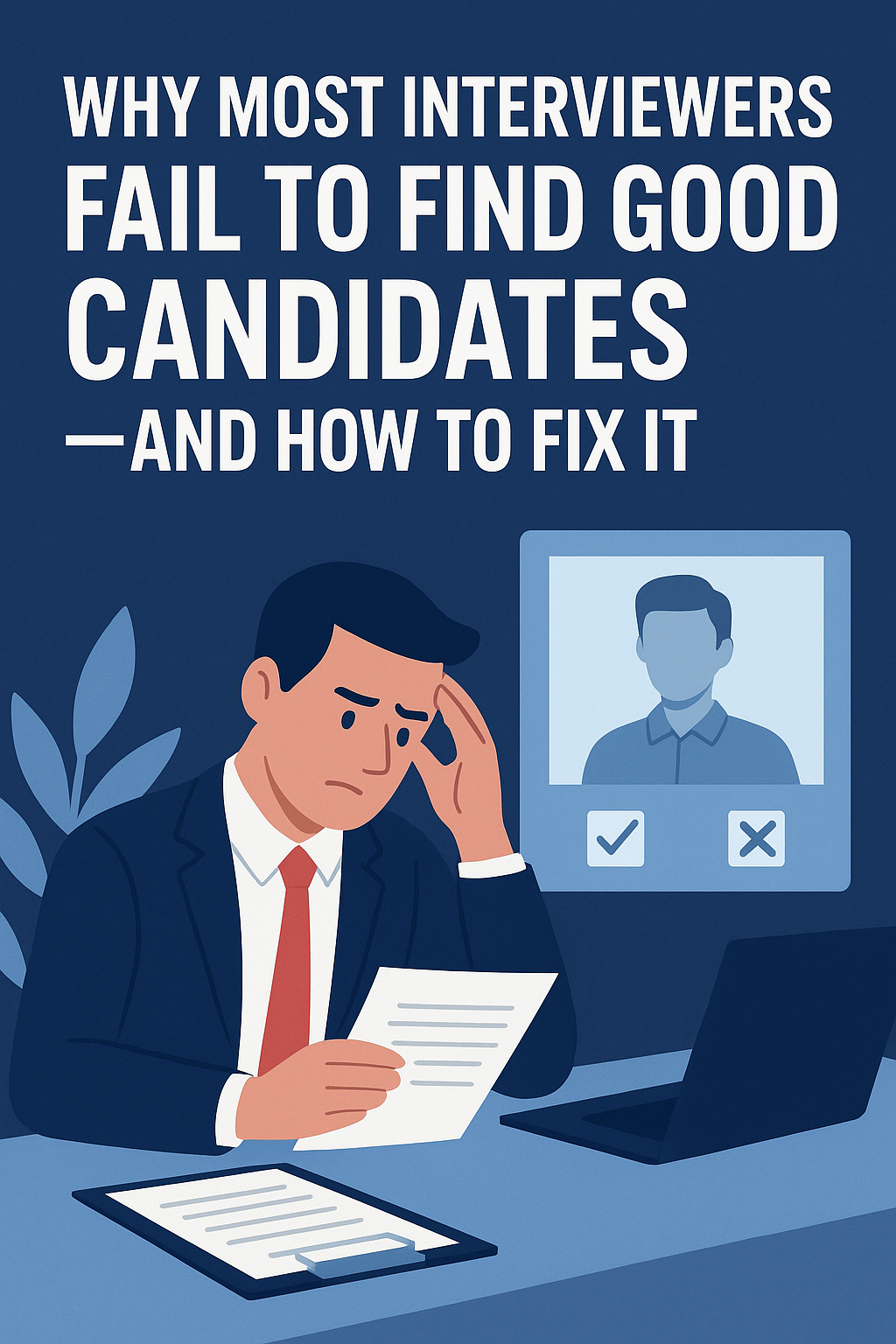
Employee Selection — The Most Complex Process of All
Employee selection is the most tedious and complex process of all, much more complex than dealing with technology and algorithms. Yet, seldom are efforts made to improve it or give it the kind of investment it deserves.
The result? The same age-old hiring process — featuring untrained interviewers, outdated evaluation methods, and a subpar recruitment process — leads to frustration on both ends.
After hundreds of thousands of interviews and onboarding, the hiring process is still lacking a lot in most organizations.
Why Are Interviewers Not Able to Find Good Candidates?
1. Poor Understanding of Requirements
Interviewers are often not provided with enough information about the positions for which they’re conducting interviews. “A senior React engineer, a MongoDB expert with exposure to Next.js, a support engineer with ITIL certification” — vague and incomplete requirements like these are far too common and don’t help anybody.
2. Incomplete Job Descriptions
A proper JD is not provided in many cases. Often, the interviewers and candidates are unclear about the job requirements. Often, the recruiter or hiring manager verbally tells what’s needed (without much thought), and the interviews begin on shaky ground.
3. Insufficient Time to Shortlist and Interview
Shortlisting happens through predefined filters — most resumes get less than 30 seconds of attention. Interviews are scheduled for 30 minutes, sometimes 15 or even less. During recruitment drives, more than 100 candidates might be interviewed within a few hours.
4. No Incentive for Interviewers
Companies have full-fledged recruitment departments, but when it comes to interviewing, existing team members are expected to take interviews without any incentives — often beyond regular work hours. Without motivation or recognition, most interviewers just want to finish the task quickly without regard to the requirements or the candidates.
5. No Criteria for Choosing Interviewers
Interviewing is often treated as a generic skill. Anyone who performs well is assumed capable of interviewing others. This leads to interviewers comparing candidates to themselves rather than evaluating their actual capabilities.
A bad interviewer can cause the organization to lose great candidates.
What Needs to Change for Better Interview Results?
1. Clear Requirement Brief
A clear JD should include both technical and non-technical expectations. A short project overview, team structure, and role-specific goals should also be shared. This helps the interviewer understand what kind of candidate will truly fit the role.
2. Collaboration Between Requirement and Interview Teams
A brief meeting between the requirement owners and the interviewers should be conducted. This allows clarification of open questions and helps interviewers gain a first-hand understanding of the need.
Clarity like “candidate will be maintaing the legacy code in React 16” or “They’ll need to have good reporting skills along with coding” helps the interviewers to look for a better fit.
3. Train the Interviewers
Interviewing is a skill — not everyone possesses it. Asking a list of questions and checking right or wrong answers isn’t real interviewing. Organizations should regularly train interviewers (internal or external) on:
-
Company culture and values
-
Interviewing best practices
-
Behavioral and situational evaluation
-
Dos and don’ts of candidate assessment
And yes — there should be a test or certification to validate that training.
4. Incentivize Interviewers
A bad hire can cost thousands of dollars in lost revenue. So doesn’t it make sense to invest in hiring the right person? Offer bonuses or recognition to interviewers whose hires perform well over time. Celebrate them publicly. Incentives should be meaningful enough to motivate employees to put in the extra effort.
5. Interview to Select, Not to Reject
Interviewers should aim to select, not reject. A high selection-to-rejection ratio should be a matter of pride.
Basic Guidelines Interviewers Should Follow
-
Understand the requirement clearly before the interviews.
-
Read the candidate’s resume in advance.
-
Make candidates feel comfortable — they’re already nervous.
-
Focus on the candidate’s real-world experience and past work.
-
Remember that technical skills are just one part of the selection.
-
Assess soft skills, attitude, and team fit — equally important for success.
Conclusion
Hiring is an age-old problem, and no company has yet cracked the code for perfect hiring. Maybe there isn’t one.
You don’t need the “best” hires — you need the right hires. The ones who fit your organization’s work culture and values, and who feel equally good about being part of it.
Like a football team, you don’t need only forwards — you need midfielders and defenders too. Each one brings unique value, and not all need to be superstars.
Subscribe
0 Comments
Oldest